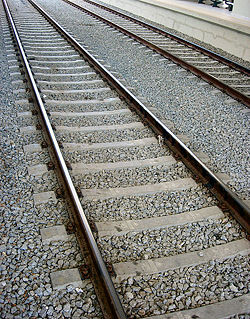Parallel (geometry)
In Euclidean geometry two parallel (symbolized by two adjacent vertical lines ∥) lines in a plane do not cross. Two geometric entities (lines or planes) are said to be parallel if they do not intersect anywhere, that is, if they do not have a single point in common. Thus, two lines are parallel if they belong to the same plane and do not cross at any point, no matter how far. One line may be parallel to any number of other lines, which all are parallel to one another. Writing PQ for a line connecting two different points P and Q, this means
unless the lines AB and EF coincide. In other word, the relation to be parallel or coincide between lines is transitive.
Similarly two planes in a three-dimensional Euclidean space are said to be parallel if they do not intersect in any point. It can be proved that if they intersect in a point than they intersect in a line (or coincide). Writing PQR for a plane passing through three different point P, Q, and R, transitivity may be written as follows:
unless the planes ABC and GHI coincide. In other word, the relation to be parallel or coincide between planes is also transitive.


